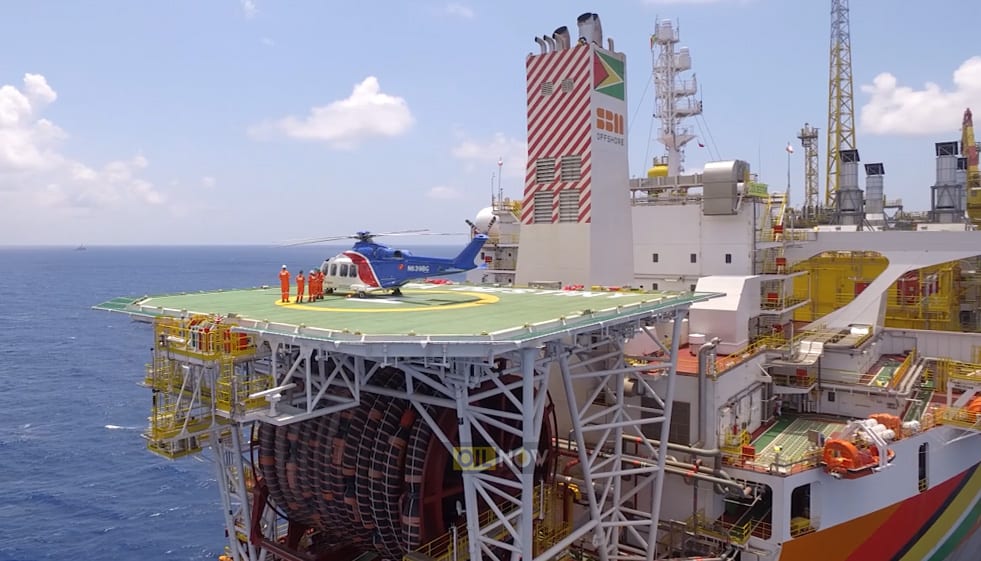The projected revenues the South American country of Guyana is set to receive from oil production have been steadily growing since approval of the first offshore development at the giant Liza field.
The Liza Phase 1 Development, sanctioned in June 2017, will begin producing oil within months, marking a milestone in the country’s history and ushering in a new era of hope for the small nation of just over 750,000 people. This project is said to be one of the fastest production ramp-ups in the industry, moving from discovery in 2015 to development just over 4 years later.
US oil major ExxonMobil, operator at the 6.6 million acres Stabroek Block, has to date made a record 14 discoveries offshore, amounting to well over 6 billion barrels of oil equivalent.
These massive oil finds have served to continuously increase the number of potential developments at the Stabroek Block with industry analyst Wood Mackenzie projecting that by 2026, 6 FPSOs could be producing more than 800,000 barrels of oil per day. This is set to ramp up even further, exceeding a potential 1 million barrels per day by the end of the next decade.
With volatility in global oil prices and a high degree of uncertainty about the long-term value of these resources, Wood Mackenzie has said rapid development of the oil fields will maximise benefits to the South American country.
Under the Stabroek PSA Guyana will be receiving half the profits from oil sold and 2 percent royalty off the top. Under these terms, Norway-based Rystad Energy has projected that government revenues from 13 of the 14 discoveries made at Stabroek so far, would amount to 117.5 billion US dollars. This will increase further when the development of all current discoveries is taken into account coupled with the potential for more oil strikes, as exploration activities continue.
The International Monetary Fund (IMF) has said the commencement of oil production in 2020 presents an opportunity for Guyana to scale-up capital and current spending at a measured pace over the medium term to address infrastructure gaps and human development needs, while reducing debt sustainability concerns. The IMF forecasts that the economy will grow 86% in 2020 as oil production comes online, and average 13.7% growth over the following four years.
These favourable projections are being made within the framework of a rapid resource development plan being pursued by ExxonMobil. This has so far been supported and approved by the Guyana government with the understanding that more offshore developments mean more oil produced and sold and this translates to more revenue flowing to the country sooner rather than later. Additionally, more activities in Guyana’s offshore basin serves to bolster the country’s position as it seeks to have the International Court of Justice reaffirm an international tribunal ruling which unanimously settled the border dispute with neighbouring Venezuela back in 1899, but which that country, since 1962, claims is invalid. This has implications for two-thirds of Guyana’s land and its Exclusive Economic Zone (EEZ) which includes its oil-rich waters.
The government’s continued support for development of its petroleum resources will ensure revenue projections to the country continue to rise, further strengthening its ability to elevate living standards and transform the economy.
Already, the Liza Phase 2 Development has been approved and a third development at the Payara field is currently being reviewed by authorities. The expectation, in keeping with Guyana’s development needs, is that this third project will be approved soon, adding to the country’s projected revenue stream from its petroleum resources.
“People have borne in mind the timeliness needed to develop these resources so they always question what will be the value of these resources if oil is still in the ground in fifteen years from now. So, bringing the oil revenues in earlier and then using it to diversify the economy and also to provide the country with cheaper energy – I think these are two of the key goals,” says Luiz Hayum, Senior Analyst at Wood Mackenzie’s Latin America Upstream Research team.




